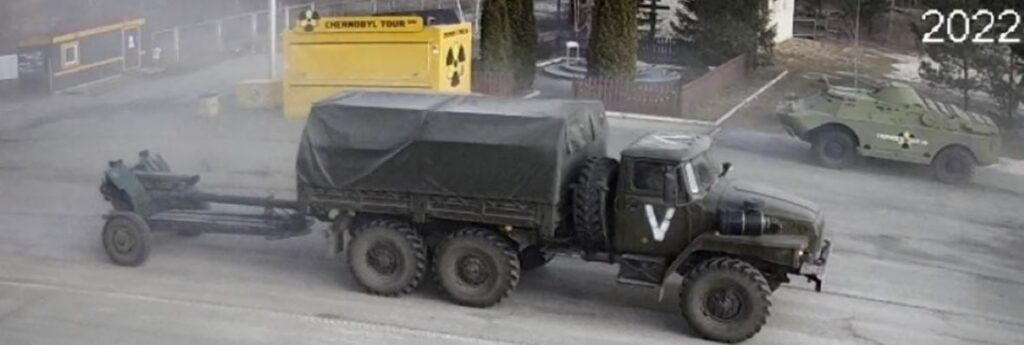Months before Russia invaded Ukraine, Yaroslav Yemelianenko decided to set up a battery-operated camera showing his company’s tourist information centre at a checkpoint near the Chernobyl nuclear power plant.
Imagine his surprise when sitting in his Kyiv apartment on Feb. 24, his livestream showed dozens of Russian tanks driving south from Chernobyl, the site of the world’s worst nuclear power disaster, toward the Ukrainian capital.
“In two hours, we saw a huge amount of Russian equipment on the cameras,” Yemelianenko, the founder of Chernobyl Tour, revealed recently.
Russian troops shut off all official government surveillance cameras, but didn’t notice the small camera Yemelianenko had installed to monitor his booth where his employees sold souvenirs and postcards to tourists.
Chernobyl Tour had been taking tourists through the “exclusion zone,” the radioactive area surrounding the plant, showing them the facility, a nearby city the Soviets built to house workers and radioactive forests.
Yemelianenko immediately decided to provide his video to the Ukrainian government. For several days, while the battery power lasted, Yemelianenko and colleagues monitored and transmitted data to the Ukrainian army every 10 to 15 minutes.
“Psychologically, it was difficult. On the one hand, we read the news with reassurance that no one would enter Kyiv. At the same time, we kept counting the number of (pieces of) Russian military equipment,” Yemelianenko said in an interview.
The stream of Russian military equipment just kept coming, all shown on the video monitor. Tanks, along with trucks carrying troops and communications equipment, stream along the gray road, past Yemlianenko’s booth bearing a radiation symbol and his company’s name, in English. So much Russian equipment was on the road that traffic jams developed on the way to Kyiv, 150 km. away.
After a few days, the signal was lost. Russian troops had seized the power plant, scene of the April 1986 nuclear catastrophe. But Yemelianenko and his team had already developed an alternative – a network of informants in villages near Chernobyl. Even though Russian forces already occupied these villages, the locals risked their safety to provide Yemelianenko details on the positions of military equipment.
Ukrainian forces subsequently took back control of the Chernobyl plant. With the passage of time and the military focus shifting elsewhere, the videos have made their way into the public domain.
The video offers a rare, first-hand glimpse into Russia’s earliest invasion moves, when the plan was to take Kyiv. Russian troops retreated from the capital in late March.

